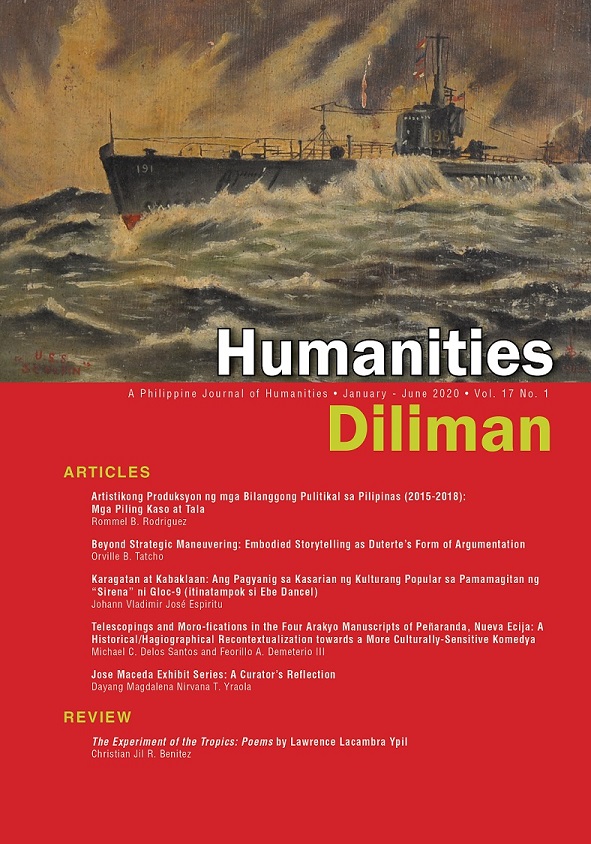Telescopings and Moro-fications in the Four Arakyo Manuscripts of Peñaranda, Nueva Ecija: A Historical/ Hagiographical Recontextualization towards a More Culturally-Sensitive Komedya
Abstract
The Philippine komedya, particularly those that follow the Moro y Cristiano template from Iberia and Meso-America, has been justly accused of marginalizing and denigrating Filipino Muslims. A particular manifestation of such komedya, called Arakyo, persists up to the present day in the town of Peñaranda, in the province of Nueva Ecija, in the central part of Luzon. This paper examines four extant manuscripts of Arakyo. Like the Philippine komedyas about the lives of some saints, otherwise known as komedyas de santo, the Arakyo is based on identifiable hagiographies, namely those of Saint Helena and Emperor Constantine the Great. But unlike many komedyas de santo, the Arakyo also has identifiable historical references. Thus, the narrative of the Arakyo can lend itself towards both hagiographic and historical comparisons. This paper’s hagiographical and historical recontextualizations of the Arakyo narrative reveal some glaring telescopings of events, persons, and places, as well as Moro-fications of the villains. This paper argues that if such telescopings and Moro-fications are rectified, the Arakyo can actually become a culturally-sensitive komedya.
Published
2020-08-28
Issue
Section
Articles
Keywords
Philippine komedya, Moro y Cristiano, Arakyo, Peñaranda, Nueva Ecija, telescoping, Moro-fication, historical recontextualization, hagiographical recontextualization, culturally-sensitive komedya


